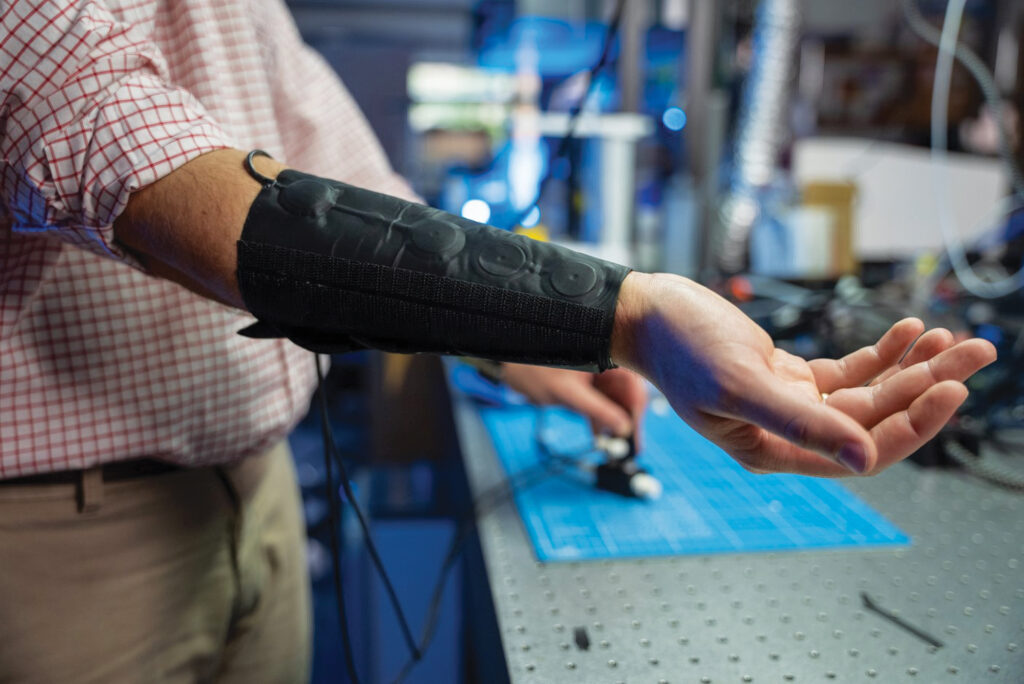
Devices that use haptics, or communication based on touch, usually require bulky hardware, making them inconvenient to use. Researchers at Rice University in Houston, Texas, have found a solution to this problem by creating a wearable, textile-based device that transmits haptic feedback, reducing the need for external hardware.
The device is composed of a belt and sleeves that rely on fluidic signals, like pressures and flow rates, to control the delivery of haptic cues, such as vibrations, tapping and squeezing. A small, lightweight tank on the user’s belt releases carbon dioxide into one or more quarter-sized pouches in the sleeves. In response, the pouches—six in each sleeve—inflate with varying force and frequency.

To test the device, the researchers ran one experiment where the cues were used for directions, guiding a user on a mile-long route in the streets of Houston. In another experiment, a user outlined invisible Tetris pieces in a field according to the cues.
The device could potentially help people with visual and auditory impairments by, for example, detecting obstacles or navigating different environments. It could also be used to mimic the sense of touch for people with amputations by embedding sensors on prosthetics that would relay haptic feedback. Mainstream uses could apply to virtual reality and gaming.
The belt and sleeves are also washable because they are heat-sealed, making the system less prone to wear and tear.
This research was published in the journal Device in September 2023.
 TEXTILES.ORG
TEXTILES.ORG


